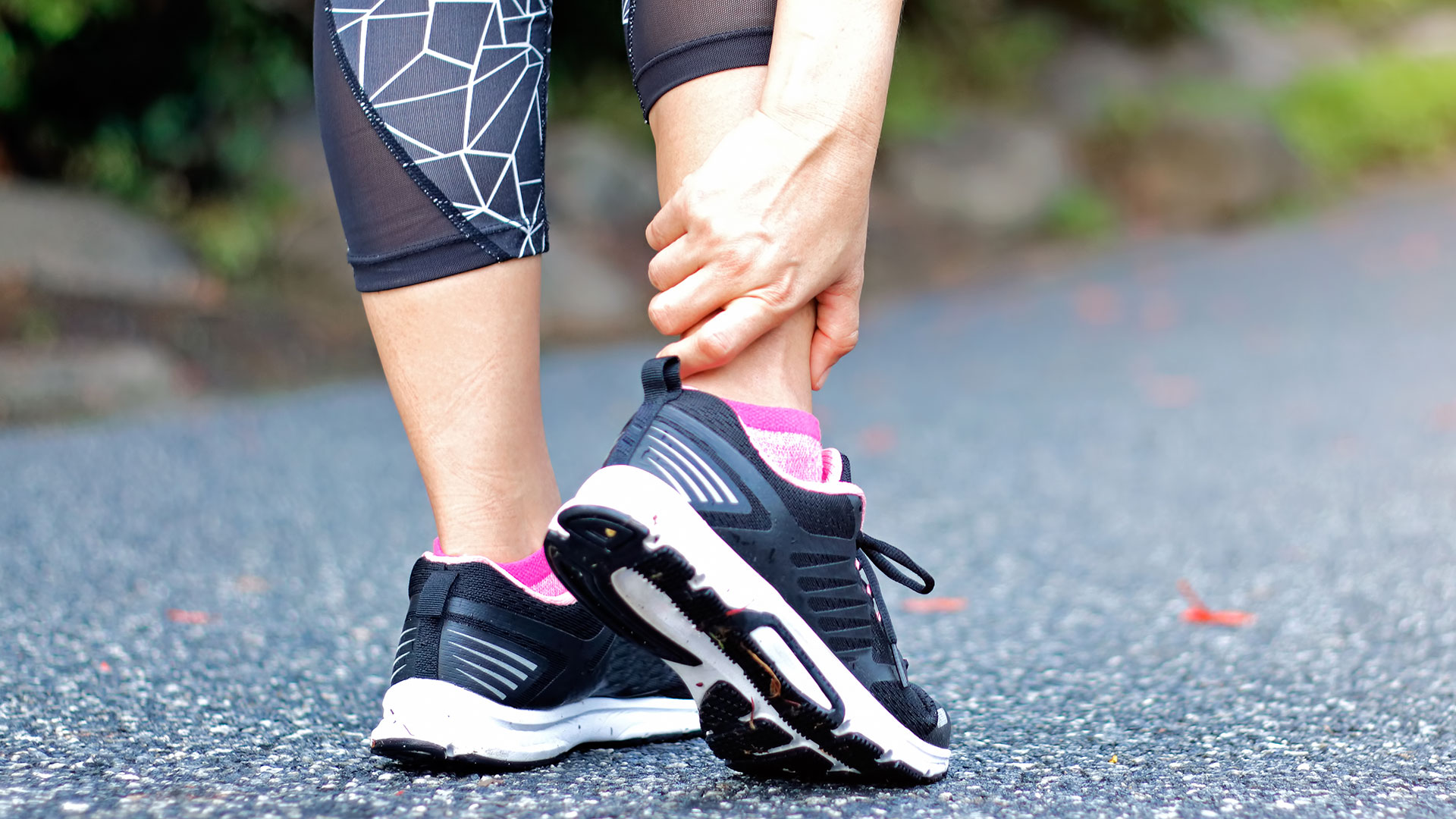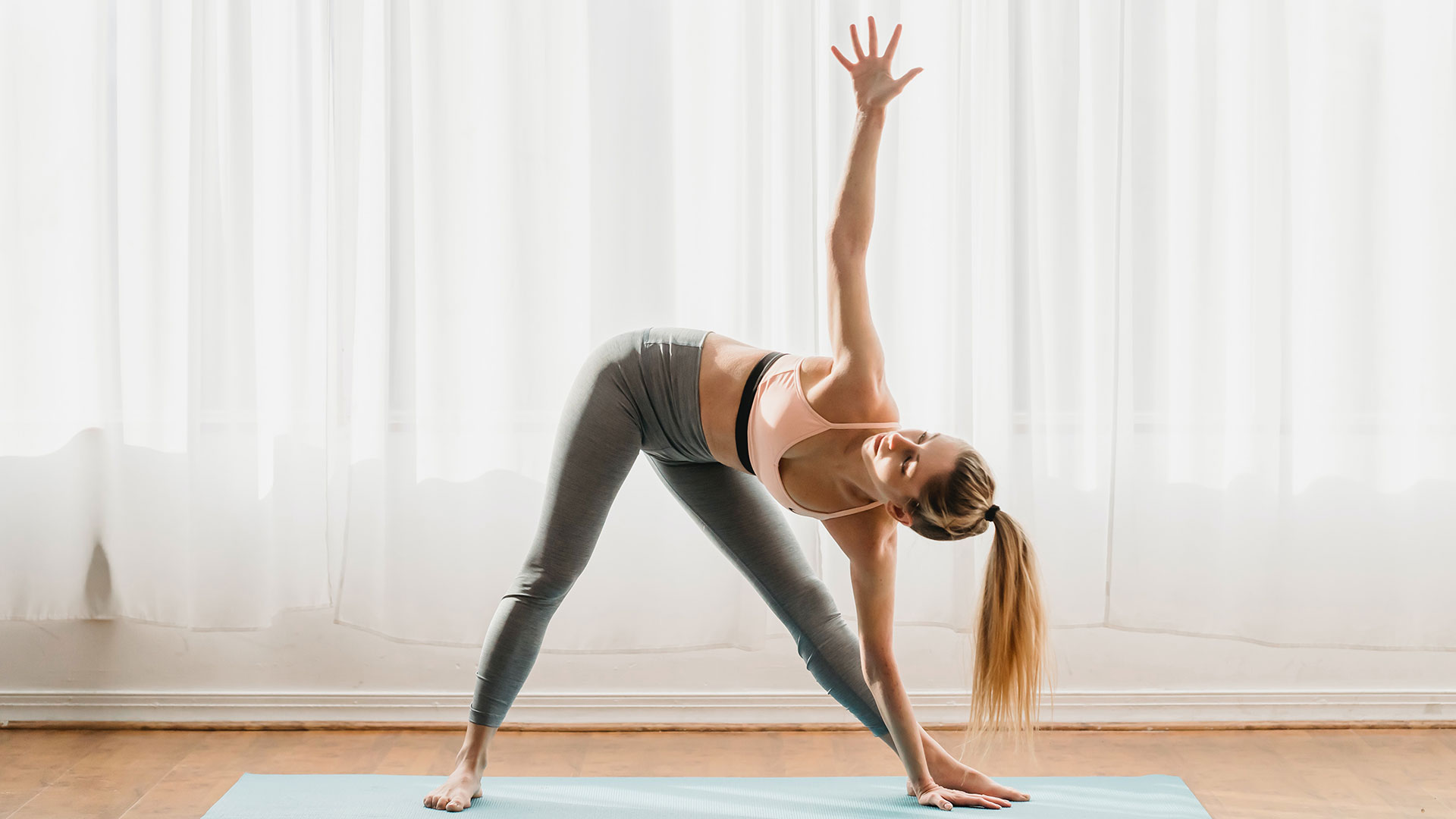Running can energise us and help clear our head but it can leave us a little stiff and achy the day after. This is where yoga comes in. Yoga has been proven to benefit runners, helping to strengthen smaller underused muscles and prevent injuries. Yoga not only strengthens the larger muscles involved when running – such as the quads, hamstrings, calves and glutes – but it also helps to release them after a run, leaving you more supple the day after.
Yoga focuses on the smaller muscles too. It can help wake up muscles that are not used in such an intense capacity during running, or sometimes in daily life. However, these smaller muscles are just as key to overall mobility and strength. If you work on paying these smaller 'underused' muscles more attention, they will benefit you when you run, offering more stability, energy and robustness (and less injuries!)
In this article, I'm going to introduce you to 3 yoga postures you can practice before and after your run. As you practice these postures, try to synchronise your breath with the movement. This offers a calming effect for your nervous system, which aids mindset and flexibility.
If you're new to yoga, you don't need much to get started, although one of the best yoga mats is a good shout to keep things comfortable under your joints, and a pair of the best yoga pants will ensure you're not limited by your clothing.
- Browse the best running shoes, to keep your feet happy
- Ease away any stiffness with one of the best foam rollers
For your ankles: ankle rotations
Before a run, it's important we pay some attention to our feet and ankles. The ankles are the first big joint in the kinetic chain from our feet all the way up to our hips. The ankles will be taking a lot of impact when running, so why not spend a few minutes warming them up?

This one is super easy to do and with time, can make quite the difference in your ankle stability, helping to prevent injuries. Standing on one leg, lift the other foot a few inches off the floor. Draw a circle with your toes anti-clockwise five times and then another five clockwise. Do this slowly and try to make the motion as smooth as possible. The slower you go, the more strength you will build. Swap to the other leg repeating the steps. This motion helps to strengthen the tendons, ligaments and tiny muscles all around the ankle joint. It also begins to wake up the feet and legs ready for your run.
For your hamstrings and hips: triangle pose
Triangle pose – or Trikonasana – is a common posture that crops up in yoga classes. It has tremendous benefits but we'll focus on why it's good for runners. Triangle pose stretches the entire body, from the ankles to the hamstrings to the hips, lower back and shoulders. It's a great posture to loosen everything up and when you practice this, you'll see how much of an opening it gives your tired legs.
Get all the latest news, reviews, deals and buying guides on gorgeous tech, home and active products from the T3 experts

Start standing, feet a leg's distance apart. Turn your right toes out, pivoting from the hip while turning your left toes in, pushing the heel outwards. Inhale, lift arms up to shoulder height with palms facing down. Exhale and draw your right hip back towards the left heel, elongating the right-side of your trunk and starting to lean over your right leg. Inhale again. Exhale, continue reaching over your right leg, elongating your trunk and placing the right hand down on the thigh, shin, or ankle – wherever it comfortably reaches. Stack your left arm over your left shoulder and point your fingers to the sky.
It's important to keep taking your right hip away from your right shoulder in order to feel the stretch in the right inner thigh and hamstrings. Keep drawing your tailbone to the left heel and press the hips gently forward while taking your trunk back, producing a stretch through the left hip. Repeat these steps on the other side. Note: for those that struggle with flexibility or with limited mobility, it's okay to keep a micro bend in the knee.
For your calves: half split pose
If you're going to feel your run the next day, it's going to be in your calves. Here we have a posture to limber up the lower leg and release tight calves. Be gentle with yourself and remember to breathe deeply.
From kneeling, place your hands on the floor in front of you. Extend your left foot forward and point the toes to the ceiling. If you're struggling to get your left leg straight, place your hands on blocks, books, or any other firm object you have nearby. Try to keep your hips stacked over your right knee, so you're not leaning too far forward or back. Inhale, lift your chest up and exhale, maintain the length in your spine. The straighter your spine, the better the stretch in the back of the leg. The whole body interconnects, so being aware of your spinal alignment will have a big impact on the stretch you experience in your legs.
When finished, slowly bend the knee and slide your leg back to the starting position. Take a breath and then repeat the above steps on the other side. Again, a microbend in the knee when the leg is extended is absolutely fine – do this if you're struggling to come into the posture or if you're having a strong sensation behind the knee – you want to feel the stretch in the hamstring or calf muscle, not in the knee itself.
Kat has 10 years of yoga teaching experience with further training in supporting injured students. She is qualified to teach Yin Yoga, Hormone Yoga Therapy and more traditional forms of Hatha yoga. She also has a certificate as a Yoga Therapy Practitioner.